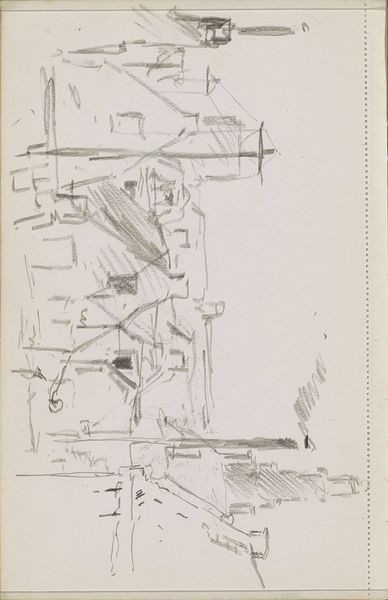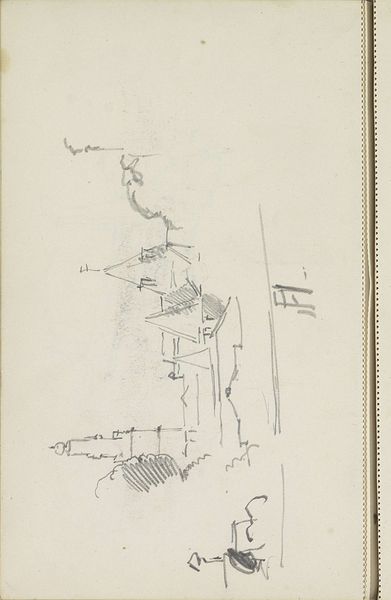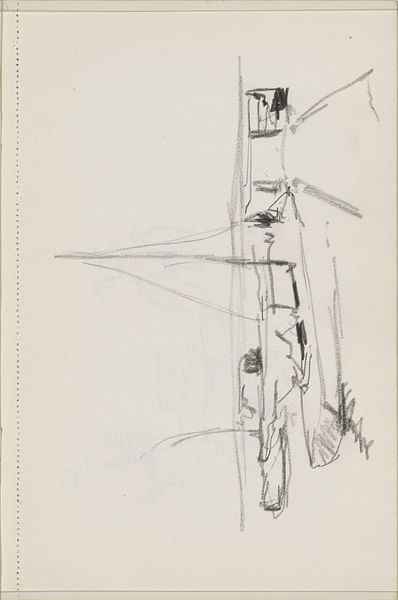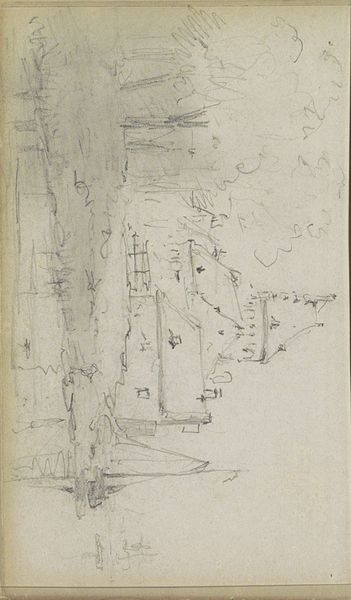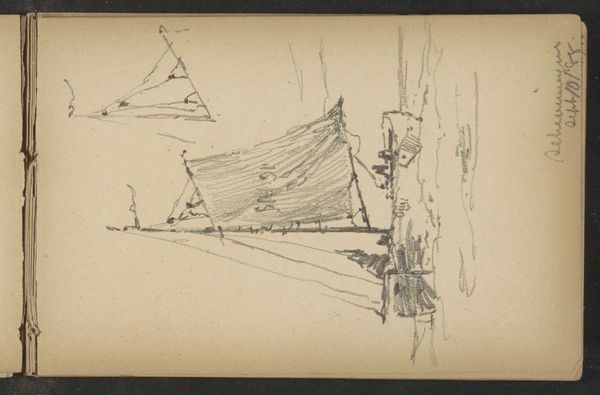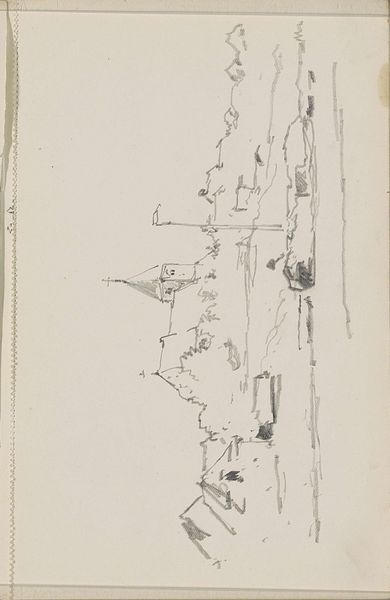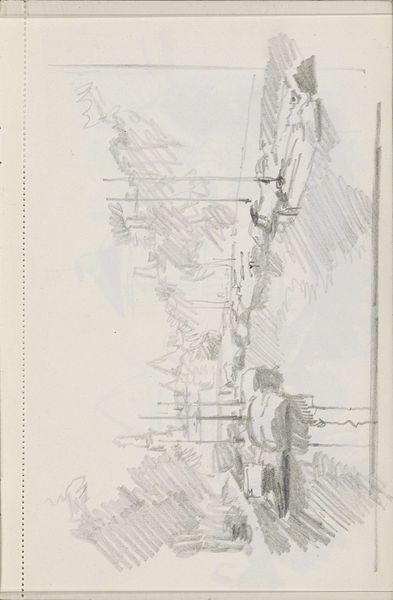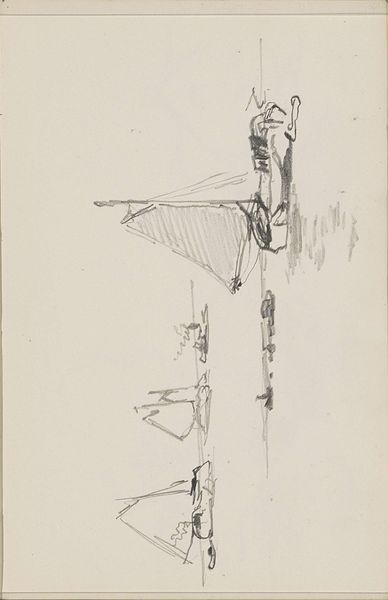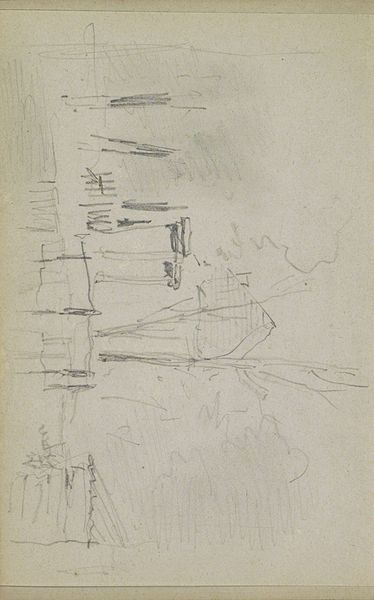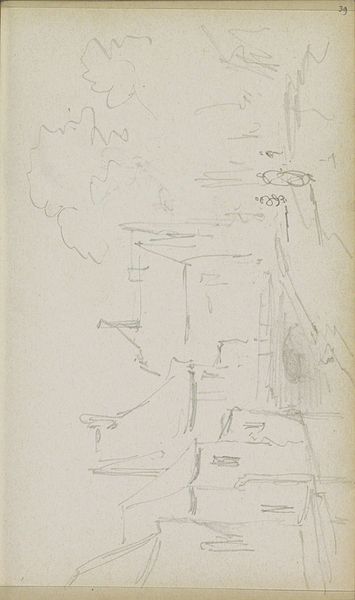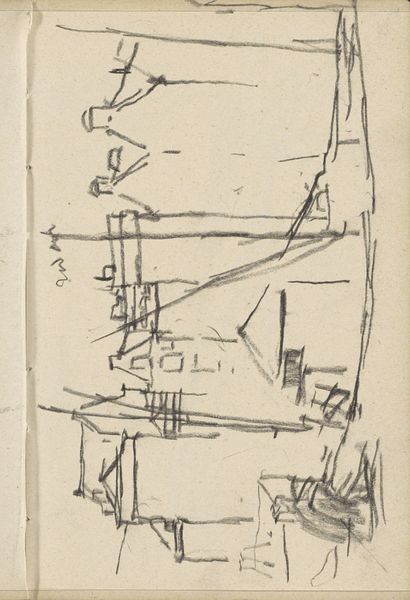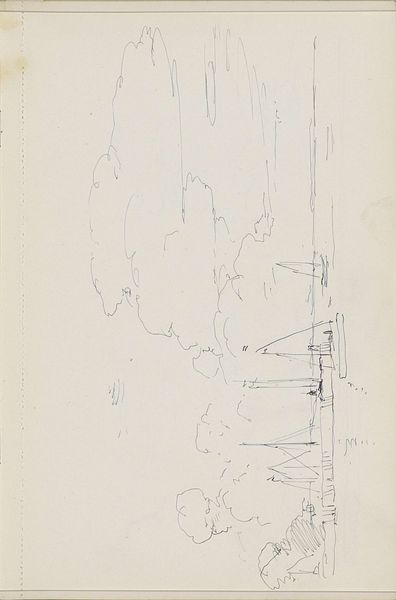
Copyright: Rijks Museum: Open Domain
Curator: This intriguing pencil drawing is titled "Achtergevels van huizen aan de Warmoesstraat," which translates to "Rear facades of houses on Warmoesstraat." Cornelis Vreedenburgh created it sometime between 1890 and 1946. Editor: My initial reaction is that this work feels transient and understated, almost like a whispered observation. I can almost feel the texture of the paper through these delicate lines. Curator: That immediacy speaks to Vreedenburgh's impressionistic style; the swift, sketch-like rendering captures a fleeting moment in the cityscape. How might the material condition shape the view of the location portrayed? Warmoesstraat was, and arguably remains, at the heart of Amsterdam’s red-light district. Editor: It certainly frames the interpretation. Consider the contrast: a raw, almost disposable medium depicting architecture associated with the commodification of bodies. It subtly asks what the artist values depicting. What labour conditions would allow a moment like this to be drawn so quickly and casually? Curator: Precisely! It encourages reflection on visibility, whose stories get told, and how the very act of observing and representing such a street—usually framed by sensationalism and stigma—normalises and documents everyday realities. We could ask, does the choice of medium here invite reflection upon, or conceal, broader patterns of economic exchange? Editor: Right, it prompts critical analysis. The casual nature of the sketch is perhaps deliberately misleading, because the rapid impression captures also a reality. But what if we dig a little bit into the urban renewal processes of that era? Curator: Definitely, that’s where the historical dimension becomes so crucial. By positioning this sketch within socio-political currents, we are questioning not just what Vreedenburgh saw, but why, when, and, importantly, for whom this observation was rendered, expanding the scope of this artwork's significance. Editor: Absolutely, I'll definitely look closer now when I return to this drawing; there is far more to it than meets the casual gaze. Curator: Yes, indeed, and these rough lines invite viewers to find meaning within both the drawing's construction and the wider sociohistorical constructions within which its setting has come to be understood.
Comments
No comments
Be the first to comment and join the conversation on the ultimate creative platform.

